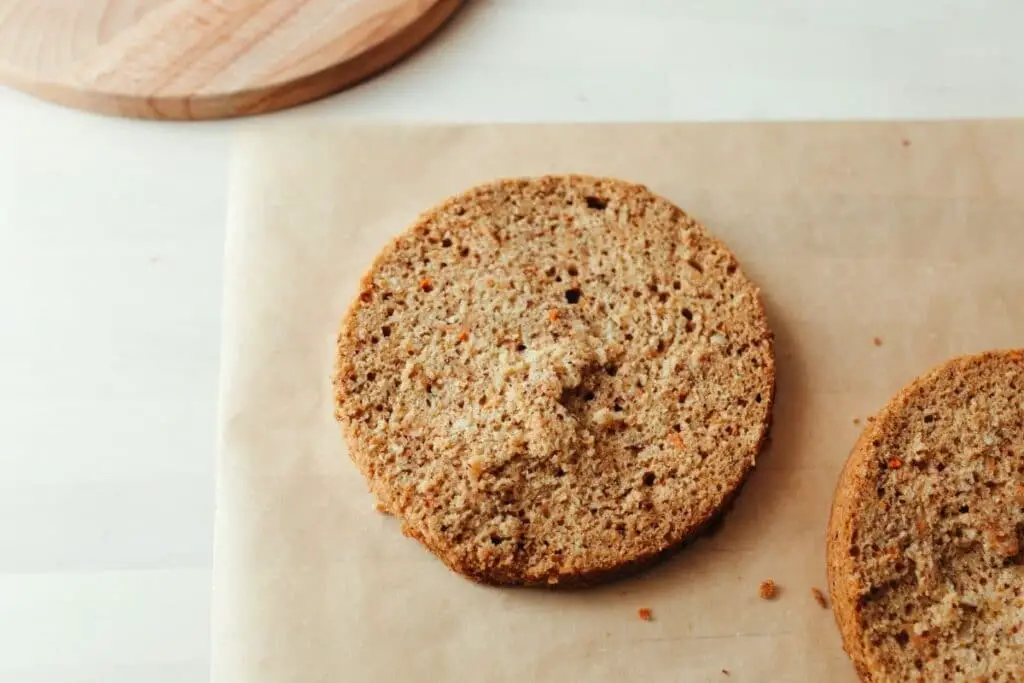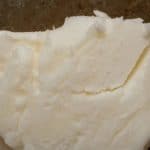Briefly, there are 5 parchment paper substitutes: Aluminum Foil, Cooking Spray, Oil, or Shortening, Silicone Baking Mat, Wax Paper, and Brown Paper. These alternatives can be used for various baking and cooking needs, such as lining baking trays, cooking en papillote, and preventing sticking.
Parchment paper is every cook’s best friend. Besides its useful non-stick qualities, it has a host of other properties that make baking and cooking fuss-free, and it simplifies what could otherwise be a painstaking cleaning process.
There are a range of parchment paper alternatives you can use if you have run out, but the best option will depend largely on what you are using it for. To help you out during your no-parchment-paper crisis we’ve listed the best parchment paper substitutes based on their versatility, use, and unique properties.
What Is Parchment Paper?
Parchment paper, often referred to as baking paper, is a fairly thin type of paper that has been coated with a silicone layer. This specialized coating makes it heat resistant up to 420°F (depending on the brand), grease-proof, non-stick, and humidity resistant. It also ensures even heating during baking and assists with temperature regulation.
Baking paper is available in bleached and unbleached types and as with aluminum foil and wax paper, it comes packaged in a roll. Some manufacturers offer it pre-cut to fit standard-size baking trays.
How To Use Parchment Paper
1. Line Baking Sheets
One of the most popular ways to use parchment paper is to line cake pans or baking sheets to prevent cookies, cakes, bread, vegetables, bacon, or other roasting items from sticking. Not only does it make it easy to remove your baked items from the baking pan when ready but it makes cleaning up very simple. Simply remove the paper and throw it away. No sticky bits clinging to the pan with long hours of soaking or scrubbing necessary.
Parchment paper can be reused if it is still clean enough but be careful not to reuse sheets that have cooked pieces of food stuck on them as this will burn and permeate into the flavor of your baked goods on reuse.
To get the parchment paper to stick to unusually shaped baking pans and prevent it from sliding around while scooping batter, use a lightly greased baking sheet to stick the parchment paper down.
Cake or tart tins are best lined with an inch overhang at the top. This allows easy removal of your baked goods as you can just lift the hanging edges.
2. Layering
Layer the paper between brownies, sticky cookies, or sandwiches to prevent them from sticking together. This is also handy when freezing slices of bread, bacon, or other items where you only want to remove a small portion from the freezer at a time.
Place baking paper between the slices before freezing. When you need to remove just one or two slices from the freezer, you can now do that without having to defrost the entire batch because it is all stuck together.
3. Piping Bag
If you don’t have a specialist plastic or material piping bag, the baking paper makes an ideal substitute due to its stiffness that can hold icing, melted chocolate, or dough without leaking or bursting.
4. Work Surface
The kids want to make pizza or roll out festive cookie shapes but you just aren’t up for all the cleaning that comes with it. Baking paper to the rescue. Tape down a sheet of parchment to your work counter. You now have a non-stick area to work on that can simply be rolled up and tossed away for a simple clean-up. This is also handy when working with meat to avoid any cross-contamination.
5. Cook en Papillote
This healthy cooking method involves steaming a piece of fish or chicken in a parchment paper pouch with herbs and spices. Since it is wrapped in the parcel the moisture does not escape and keeps the meat from drying out while allowing the herbs and spices to infuse.
6. Makeshift Funnel
Whether you’ve just ground up fresh coffee beans, made your spice mix, or homemade cinnamon sugar and need to get it into a narrow-top shaker or bottle, roll the parchment into a funnel shape and use it to easily fill the container without spilling or losing any of your precious ingredients.
7. Grating, Chopping, and Sifting
Before laying down the piece of parchment, fold it in half pressing down at the center to form a ridge down the middle. Open it up again and lay it flat on the counter so that there is a slight groove in the center. Now you can use it to grate cheese, chop nuts, or sift flours and simply lift the edges, letting it all roll down the center into your batter or cooking pot without having to scrape pieces off the counter or struggle to gather scattered bits together.
Best Parchment Paper Substitutes
When choosing the best parchment paper substitute consider the properties of the alternative product, especially in terms of heat resistance and non-stick qualities. Below, we’ll outline which alternative options are best for each use.
1. Aluminum Foil
Although not quite as sturdy, this is a great heat-resistant parchment paper alternative. It lacks non-stick properties so if you are using it to line a tray that you are going to use for roasting meat or veggies you will also need to apply a small amount of oil or non-stick spray.
Although it doesn’t look quite as stylish as a parchment parcel, foil is much easier to seal when cooking en papillote and doesn’t require fancy folding techniques to prevent leaking. The foil also does not burn easily and can be placed on the barbecue or even directly on coals.
When using foil just be aware that because it is reflective things may cook a little faster.
Best used for: Lining trays for roasting vegetables or meat, cooking en papillote, separating sandwiches or cookies in a lunch box, or as food wrappers.
2. Cooking Spray, Oil, or Shortening
If you are lining your baking tray for non-stick purposes only, then these should be your alternative go-to’s. Simply spray the baking tin with a layer of cooking spray to create a non-stick surface. Cooking spray is an easy way to ensure all the corners of your baking tin are greased.
Alternatively, use clean fingers to rub butter or shortening on the baking sheet or even a basting brush to brush oil onto the pan. Salted butter may add a slightly salty flavor to your baked goods on the exterior while shortening is more neutral. Oils such as olive oil or canola oil are best used for savory applications like roasting chicken or vegetables, baking bread, or pizza.
Best used for: Lining baking tins and roasting pans to prevent sticking
3. Silicone Baking Mat
In the same way that you get flexible silicone cake and muffin tins you also get flat silicone mats. These mats are designed with high-quality, food-grade silicone that has a non-stick surface and heat resistance up to 428°F. Although still bendable, a Silpat baking mat is much thicker and sturdier than parchment and wax paper and can be washed and reused for years.
They are ideal as a non-stick baking sheet lining for baking cookies and pastries and for rolling out dough on a counter. Do not use your silicone baking pad as a chopping board as you will end up damaging it. Ensure you purchase food-grade silicone mats of good quality since low-quality materials that are not food grade can give off toxins when heated.
Best used for: Lining baking sheets and rolling out dough
4. Wax Paper
Wax paper looks fairly similar to parchment but features a thin, waxy coating on both or one side of the paper. This makes it non-stick and moisture resistant to some degree. It also comes in a handy roll and is easy to cut or tear into the size you need.
Its non-stick quality makes it perfect to cover counters for rolling out dough and shaping pastries. It is ideal for lining dessert tins like no-bake cheesecake that are not going to be heated but rather set in the fridge or freezer. Keep in mind that waxed paper cannot go in the oven or microwave since it is not heat resistant. It could burn or catch fire and the wax coating can melt.
Best used for: Covering counters, workspaces, and lining tins for fridge tarts, mousses, and no-bake cheesecake. It is ideal for separating brownies and cookies so they don’t stick together when stored, separating meat for freezing, wrapping pastries and sandwiches, and forming a funnel for decanting items into a jar.
5. Brown Paper
Brown paper and paper grocery bags are not heat resistant and are therefore not suitable for use in any way that involves heating whether in the oven, microwave, or other application. Use brown paper only to replace parchment paper when wrapping food or covering counters.
Best used for: Keeping workspaces clean, forming a funnel, or separating items to prevent sticking.
FAQs
Conclusion
Although there is no single parchment paper substitute to fulfill all its functions, there are many alternatives to choose from depending on what you are making. When choosing the best parchment paper substitute for your next baking project, take the heat resistance and non-stick properties into account. Have fun, and always remember; safety first.
*image by ipolonina/depositphotos









